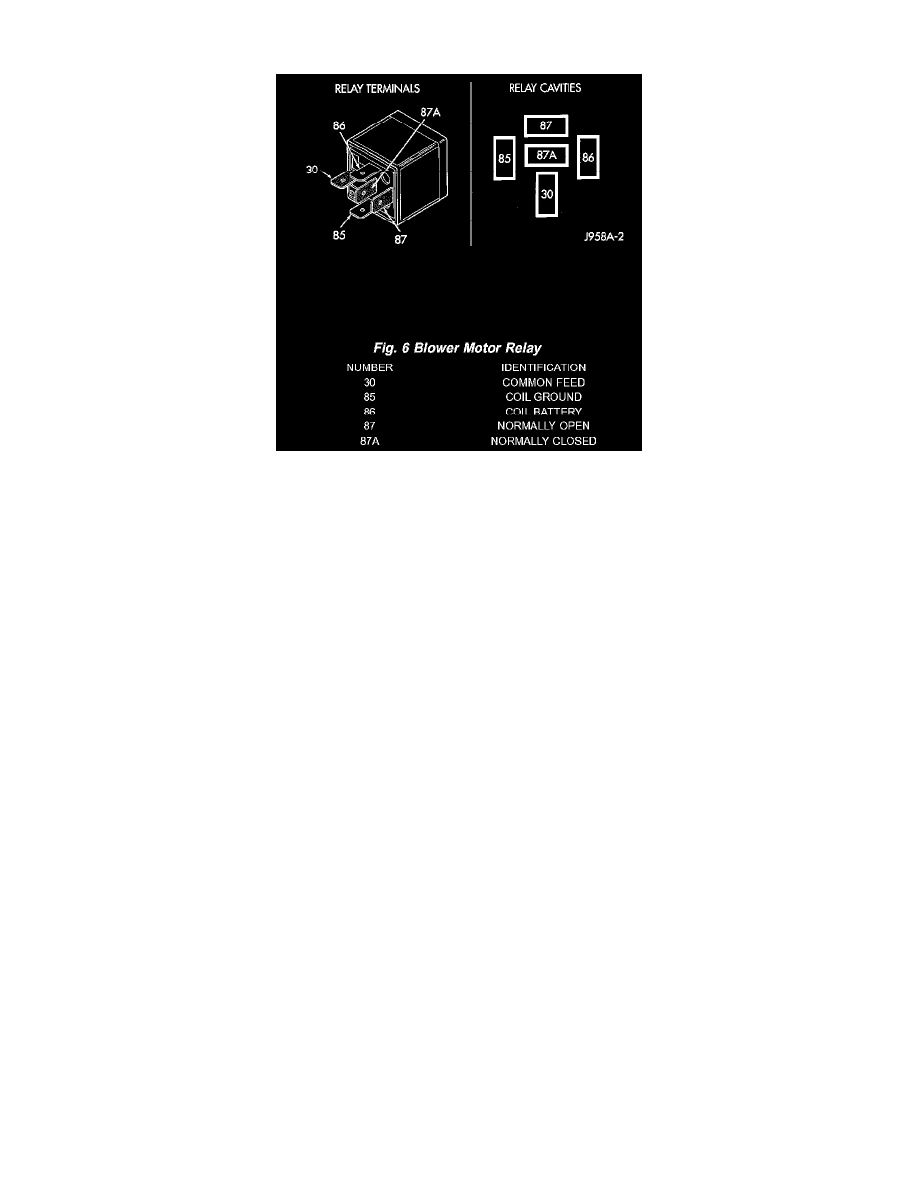Town & Country V6-3.3L VIN R (2003)

Blower Motor Relay: Description and Operation
Fig.6 Blower Motor Relay
FRONT BLOWER MOTOR RELAY
The blower motor relay is a International Standards Organization (ISO) mini-relay. Relays conforming to the ISO specifications have common
physical dimensions, current capacities, terminal patterns, and terminal functions. The ISO mini-relay terminal functions are the same as a
conventional ISO relay However, the ISO mini-relay terminal pattern (or footprint) is different, the current capacity is lower, and the physical
dimensions are smaller than those of the conventional ISO relay. The blower motor relay is located in the Intelligent Power Module (IPM), which
is in the engine compartment near the battery. See the fuse and relay layout map molded into the inner surface of the IPM cover for blower motor
relay identification and location.
The black, molded plastic case is the most visible component of the blower motor relay Five male spade-type terminals extend from the bottom of
the base to connect the relay to the vehicle electrical system, and the ISO designation for each terminal is molded into the base adjacent to each
terminal.
The blower motor relay is an electromechanical switch that uses a low current input from the Front Control Module (FCM) to control the high
current output to the blower motor resistor (manual heater-A/C control) or blower power module (ATC control). The movable common feed
contact point is held against the fixed normally closed contact point by spring pressure. When the relay coil is energized, an electromagnetic field
is produced by the coil windings. This electromagnetic field draws the movable relay contact point away from the fixed normally closed contact
point, and holds it against the fixed normally open contact point. When the relay coil is de-energized, spring pressure returns the movable contact
point back against the fixed normally closed contact point. The resistor or diode is connected in parallel with the relay coil in the relay, and helps
to dissipate voltage spikes and electromagnetic interference that can be generated as the electromagnetic field of the relay coil collapses.
The blower motor relay terminals are connected to the vehicle electrical system through a receptacle in the Intelligent Power Module (IPM). The
inputs and outputs of the blower motor relay include:
-
The common feed terminal (30) receives a battery current input from the battery through a B(+) circuit at all times.
-
The coil ground terminal (85) receives a ground input through the front/rear blower motor relay control circuit only when the FCM
electronically pulls the control circuit to ground.
-
The coil battery terminal (86) receives a battery current input from the battery through a B(+) circuit at all times.
-
The normally open terminal (87) provides a battery current output to the blower motor resistor (manual heater-A/C control) or blower power
module (automatic heater-A/C control) through a fuse in the IPM on the fused front blower motor relay output circuit only when the blower
motor relay coil is energized.
-
The normally closed terminal (87A) is not connected to any circuit in this application, but provides a battery current output only when the
blower motor relay coil is de-energized.
Refer to the appropriate wiring information. The wiring information includes wiring diagrams, proper wire and connector repair procedures,
further details on wire harness routing and retention, as well as pin-out and location views for the various wire harness connectors, splices, and
grounds.
